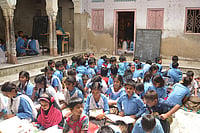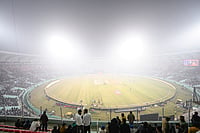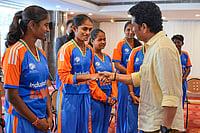Based on these studies MDRA has identified homogenous political clusters in the three states where assembly elections are being held simultaneously with Lok Sabha. In addition a detailed analysis of these clusters has helped to identify electoral battlegrounds where the contest is so close that even a small shift could throw up vastly different result. The sampling design is based on such unique political clusters. The survey was carried out in 84 assembly constituencies (36 in Andhra Pradesh, 28 in Karnataka and 20 in Orissa). In all 6251 voters were personally interviewed at their residence. The survey covered 252 villages and 84 urban centres spread. The fieldwork for the survey was conducted between March 26-April 1, 2004.
In each assembly segment 3 village and 1 urban centre was covered. In each selected village/urban centre the voters were selected using systematic random sample procedure. In each household only one respondent was selected. Alternate male and female voter was interviewed. The voters were interviewed using a structured interview schedule in local language.
The forecast of seats is based on a exhaustive list of "Push and pull parameters" which drive the voting choice like incumbency factor for the state govt. and Central govt., rating of MP’s performance, perception about party/alliances, the ability of the alliance partner to transfer votes and certain locally relevant emotive issues. These parameter were tracked to understand the nature and direction of the shift. The Outlook-MDRA National poll carried out between February 19-25, 2004 was used as benchmark.
In addition to the above, qualitative information was collected based on in depth interviews with local opinion leaders. Qualitative data was used to understand shifts, identify under currents and validate the findings of the quantitative survey.
Statistically speaking given the large sample size the margin of error for this survey should be with in one percentage point of votes polled for the alliance. However with over 20 days remaining for the first phase of polling to start, candidates yet to be announced in fifty percent of the constituencies, the margin of error is with in 3 percentage point.
MDRA is a premier research agency with some of the best known professional associated with it. This benchmark study for ASSEMBLY 2004 is conducted by Naveen Surapaneni, Director MDRA assisted by Ram Swarup Mohapatra, Rajeev Kumar Singh, Raj Kumar, Shiv Singh Bisht, Sundar Rao and Vikash Pandey. The fieldwork was co-ordinated by Narender Batt, Sanjay Kumar Saini, Sunil Sahu, Ajay Singh and Vijay Babu. Dr. N. Bhaskara Rao, is the chairman of MDRA. The team had accurately predicted the outcome of assembly elections in these three states in 1994, 1999 and 2000.


























